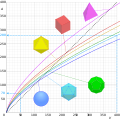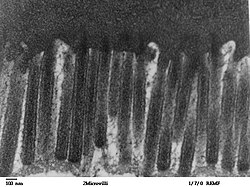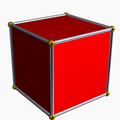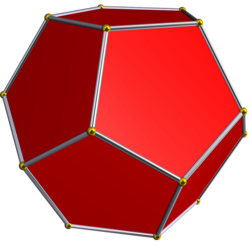Surface-area-to-volume ratio
The surface area to volume ratio of an object is the relationship between two measurements. It is the ratio of Surface area to volume. It shows the comparison between the size of the outside of an object and the amount inside. Small or thin objects have a large surface area compared to the volume. This gives them a large ratio of surface to volume. Larger objects have small surface area compared to the volume so they have a small surface area to volume ratio. A large lump, for example, has a small ratio, and may be smashed into powder to give it a large surface to volume ratio.
Two common ways of writing it are sa/vol or SA:V. Either of these say to divide the surface area by the volume. This shows how much surface area is required for each unit of volume.
Example
Cube 1 measures 1 meter on each side.
|
Cube 2 had sides that measured 10m
|
Surface-area-to-volume Ratio Media
Graphs of surface area, A against volume, V of the Platonic solids and a sphere, showing that the surface area decreases for rounder shapes, and the surface-area-to-volume ratio decreases with increasing volume. Their intercepts with the dashed lines show that when the volume increases 8 (2³) times, the surface area increases 4 (2²) times.
Cells lining the small intestine increase the surface area over which they can absorb nutrients with a carpet of tuftlike microvilli.
An orange sphere rendered with POV-Ray ray tracer.*Source text: #version 3.5;* #include "colors.inc"* * camera {* location <0, 0, -2.4>* right x * image_width / image_height* look_at <0, 0, 0>* }* * sky_sphere {* pigment {* color White* }* }* * light_source {* <-20, 20, -20>* color White* }* * sphere {* <0, 0, 0>, 1* texture {* finish {* ambient 0.









